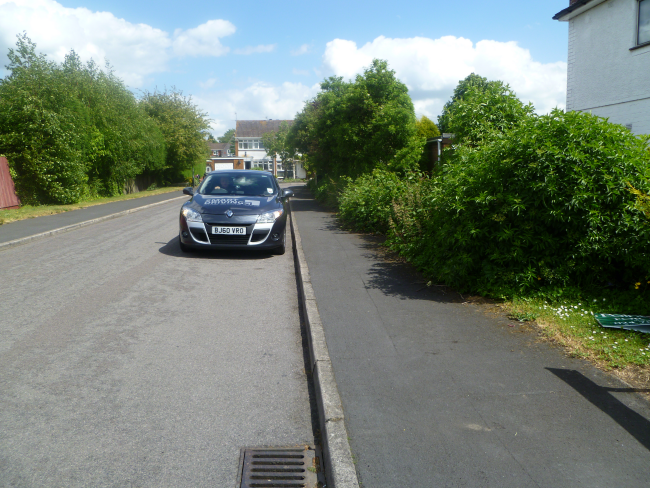- i-Course Driving Home Page
- Section 5
- Left reverse
- How did you do?
Left reverse - How did you do?

Starting position
Make sure that you complete your six point check before moving off - remember that on the exam it's easy to fall into the trap of focussing so much on the reverse part of the manoeuvre at this point and neglecting the basics. Bearing in mind that you will be stopping almost straight away and that you need time to look into the side road to make sure that it's clear you will probably need a slightly bigger gap in traffic than you would if simply moving off to drive away.

Before you reverse
Check that the side road is clear as you drive past - remember that you are looking for any potential dangers. Stop around 18 inches (45 centimetres) from the kerb - if you stop too close you risk tyre damage against the kerb as you reverse, there can also be debris in the gutter that can harm your tyres.

The point of turn
Before steering, check all around, especially the right blind spot, and be prepared to give way to other road users. The point of turn is reached when your rear wheels are in line with the point that the kerb starts to bend around the corner - in other words, the point where you will start to steer.
With practise you will soon be able to accurately judge the point of turn, possibly by using a 'reference point' on your car to line up with the kerb - bear in mind, however, that there is no single reference point that will work for everyone - people and cars come in different shapes and sizes and so the view is slightly different for everyone. Some driving instructors use marker points on their vehicle windows to indicate reference point for their pupils but this can cause as many problems as it solves - you will learn more about this during the Part-Three training.

Reversing around the corner
Reasonably close to the kerb ideally means maintaining your 45 centimetre margin, however, there is no strict requirement on distance from the kerb, the most important thing is to be under full control and to avoid 'weaving about' - however you must remain well to your own side of the road.
Again observation is of the utmost importance - check all around at least two or three times during the manoeuvre, especially the right blind spot. Remember that having your window down will help you to hear other vehicles, but you can't rely on this totally, electric cars and bicycles can be very quiet.

Finishing position
The examiner will usually tell you when to stop - if not continue for around four car lengths so that you are well clear of the junction. Here we see that the driver has stopped in a parking position quite close to the kerb - this is what you should be aiming to achieve, however, finishing a little further out would be better than hitting the kerb! Look well back along the road to judge your position (in the same way that you look well ahead when driving forwards).
As mentioned earlier in this unit, keep looking back until the car stops (apart from normal observation checks) - imagine travelling five or six feet while looking to the front and a small child running out from a gateway...
Next: When you are happy that you are consistently reaching a good standard on your practise sessions, complete the checklist and questions for this unit.
